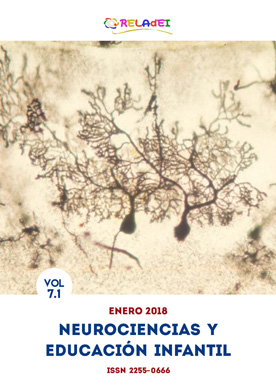Vol 7 No 1 (2018): Neurociencias y educación infantil, Monográfico. Introducción, páxinas 42-51
Recibido: 06-07-2018
Aceptado: 06-07-2018
Publicado: 13-07-2018
L’evoluzione culturale e l’evoluzione biologica corrono, sia pure contrapposte, lungo una via parallela. Sono i processi apprenditivi – potenzialità genetica e plasticità biologica – propri della specie umana ciò su cui agiscono le situazioni ambientali, modificando e stimolando attraverso l’educazione. Le possibilità di elaborare informazioni nell’interazione con l’ambiente derivano agli individui da potenzialità adattive sviluppatesi a livello filogenetico che coinvolgono processi espliciti e impliciti in ambiti sia cognitivi sia emotivi. La conoscenza esplicita e implicita riconosce strutture concettuali centrali di natura dominio generale eppure correlate all’esperienza individuale. Insegnare con l’implicito come struttura concettuale implica adottare modelli di insegnamento che mirano a rinforzare le conoscenze primarie. La teoria didattica bioeducativa si orienta verso l’attivazione di strutture concettuali di base. L’organizzazione cerebrale è regolata da variabili neuro-evolutive e forme socio-culturali. Il rapporto aperto tra le basi biologiche dell’apprendimento e lo sviluppo culturale si realizza in prospettiva bioeducativa in modo olistico. Il ruolo delle emozioni, in particolare, viene interpretato in modi sempre più organici e pluridisciplinari. La gestione delle emozioni va messa in relazione con un efficace sviluppo di competenze socio-cognitive, influenzando così la vita sociale e culturale degli individui. L’educazione alla gestione delle emozioni coniuga in sé il ruolo delle funzioni biologiche, culturali e psico-sociali, mostrando in questa sintesi sia la dimensione dell’individuo soggettiva e sociale, sia l’ambito esplicito e implicito.
Neuroscienze, Emozioni, Cognizione


